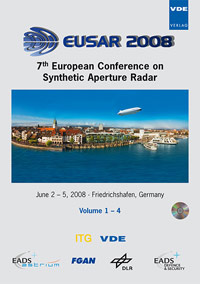Surface Displacements of the St. Augustine Volcano, Alaska, measured from an DInSAR and GPS data
Conference: EUSAR 2008 - 7th European Conference on Synthetic Aperture Radar
06/02/2008 - 06/05/2008 at Friedrichshafen, Germany
Proceedings: EUSAR 2008
Pages: 4Language: englishTyp: PDF
Personal VDE Members are entitled to a 10% discount on this title
Authors:
Lee, Chang-Wook; Jung, Hyung-Sup; Won, Joong-Sun (Yonsei University, Korea)
Lu, Zhong; Kwoun, Oh-Ig (USGS/EROS data center and CVO, USA)
Abstract:
Augustine Volcano is an active stratovolcano located southwest of Anchorage, in the Aleutian arc of Alaska. This volcano has experienced seven significantly explosive eruptions between 1812 and 1986. The most recent eruption occurred on 11 January 2006. To measure the surface displacements of this eruption, we applied satellite radar interferometric technique with European Remote Sensing Satellite 1 and 2 (ERS-1/2). Interferograms between June 1992 and October 2005 revealed about 8-9 cm (Line of Sight direction) uplift around the crater in the east frank of the Augustine Volcano (by magma plumbing system). To retrieve a temporal deformation sequence from each interferogram, we applied a refined SBAS technique. The atmospheric contribution is reduced by spatial and temporal filtering in the processed datasets by this technique. GPS data that have been measured since September 2004 confirm the results of satellite radar interferometry. These results demonstrate that satellite radar interferometry effectively monitors deformation of Augustine Volcano and helps us quantify the inflation caused by dynamic magma activities.


